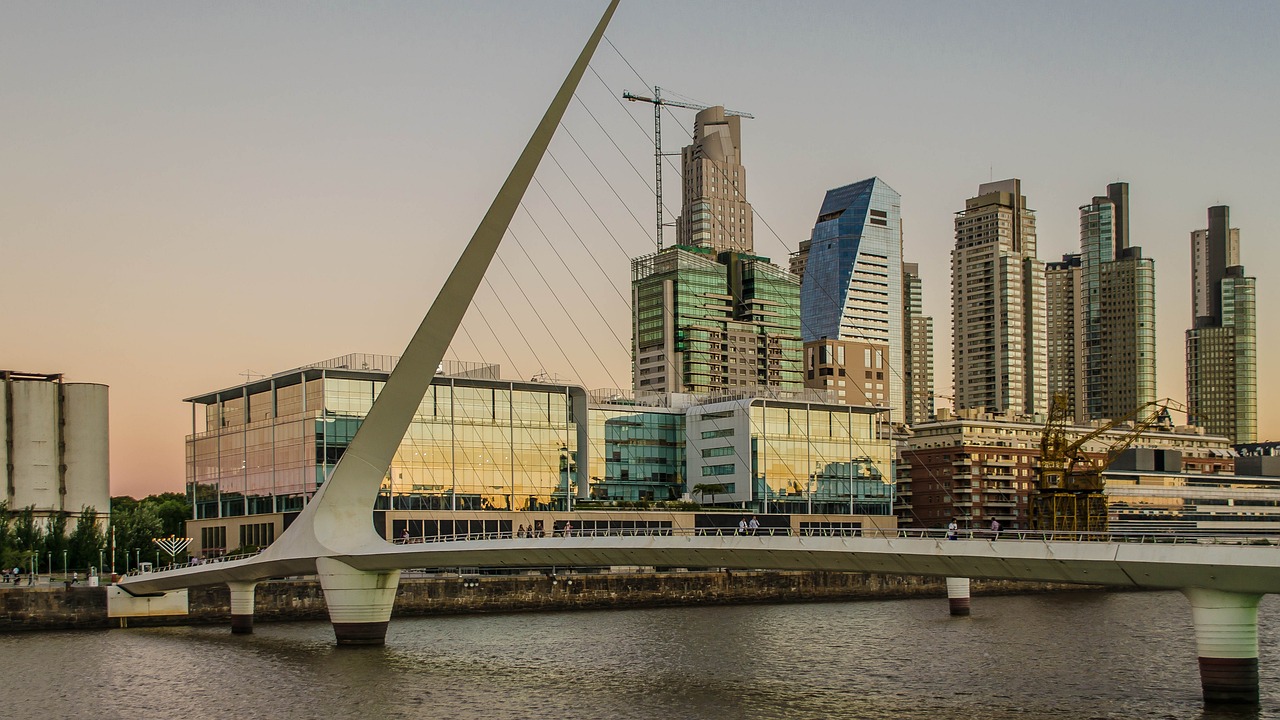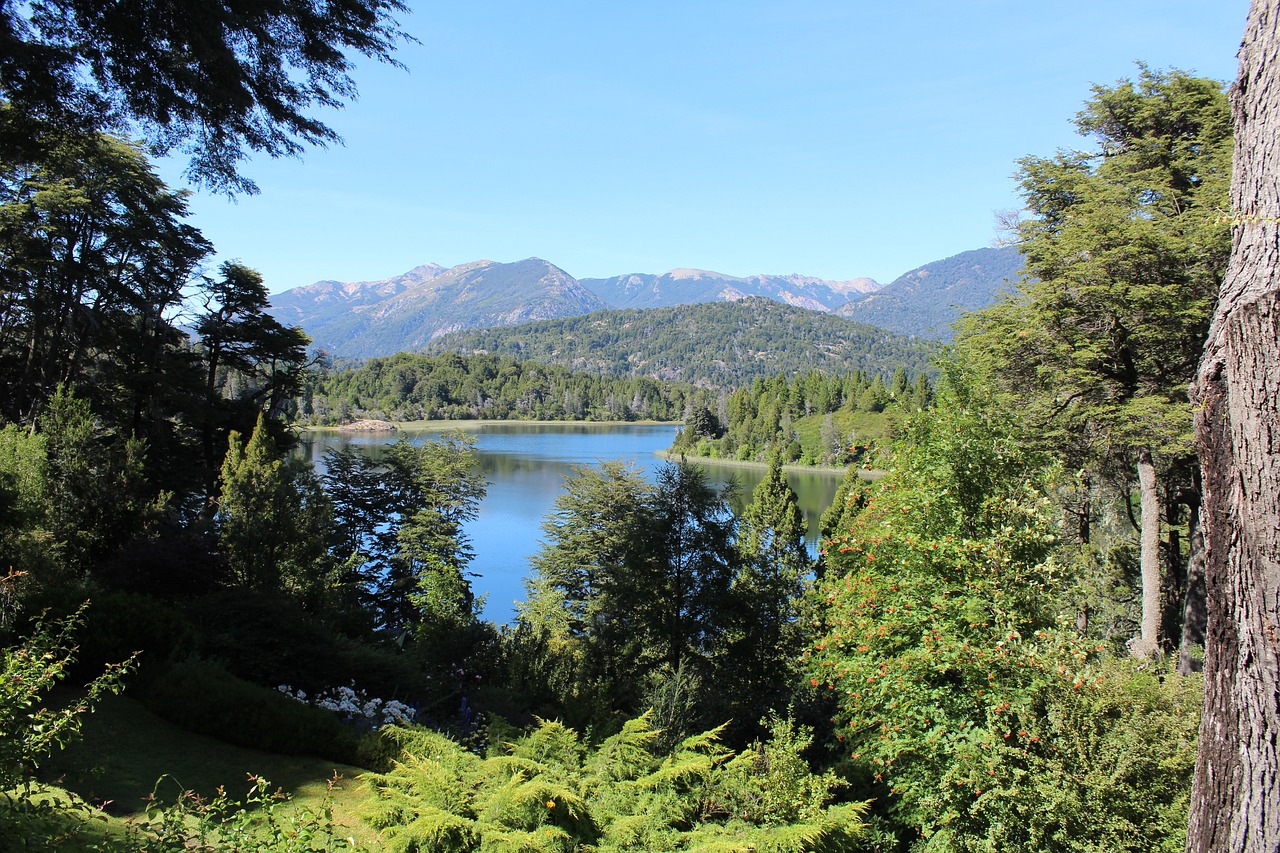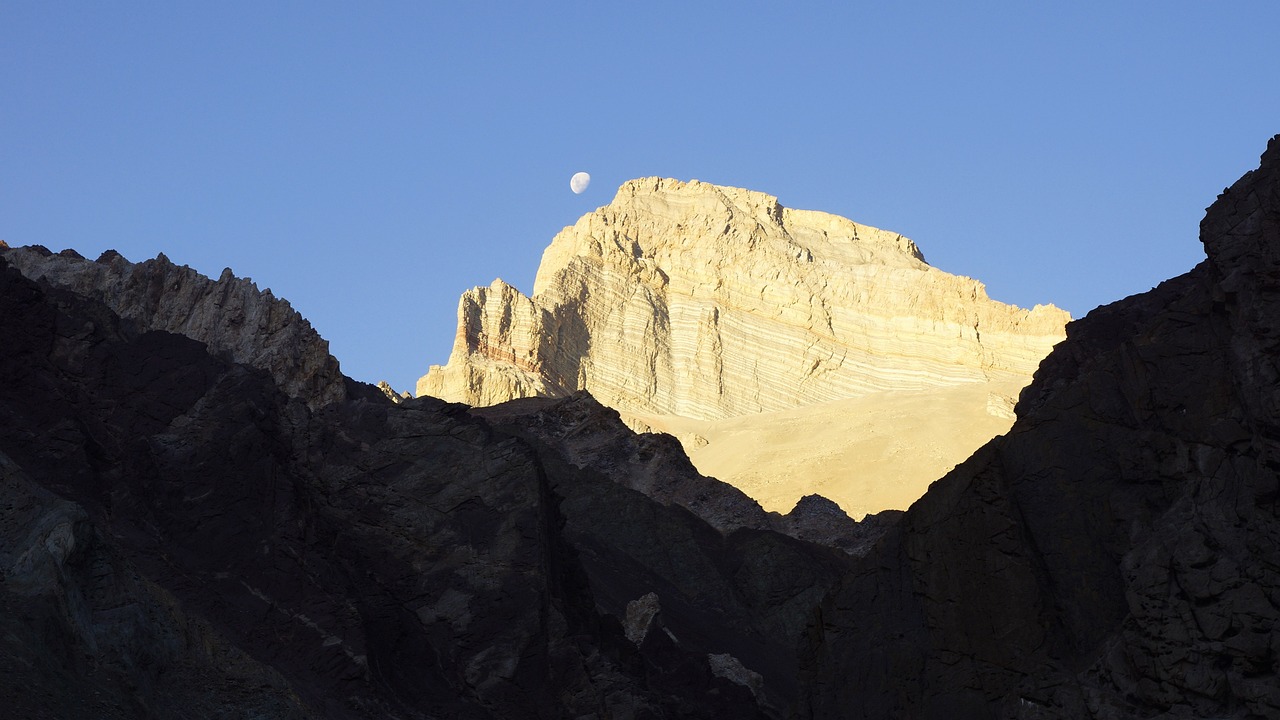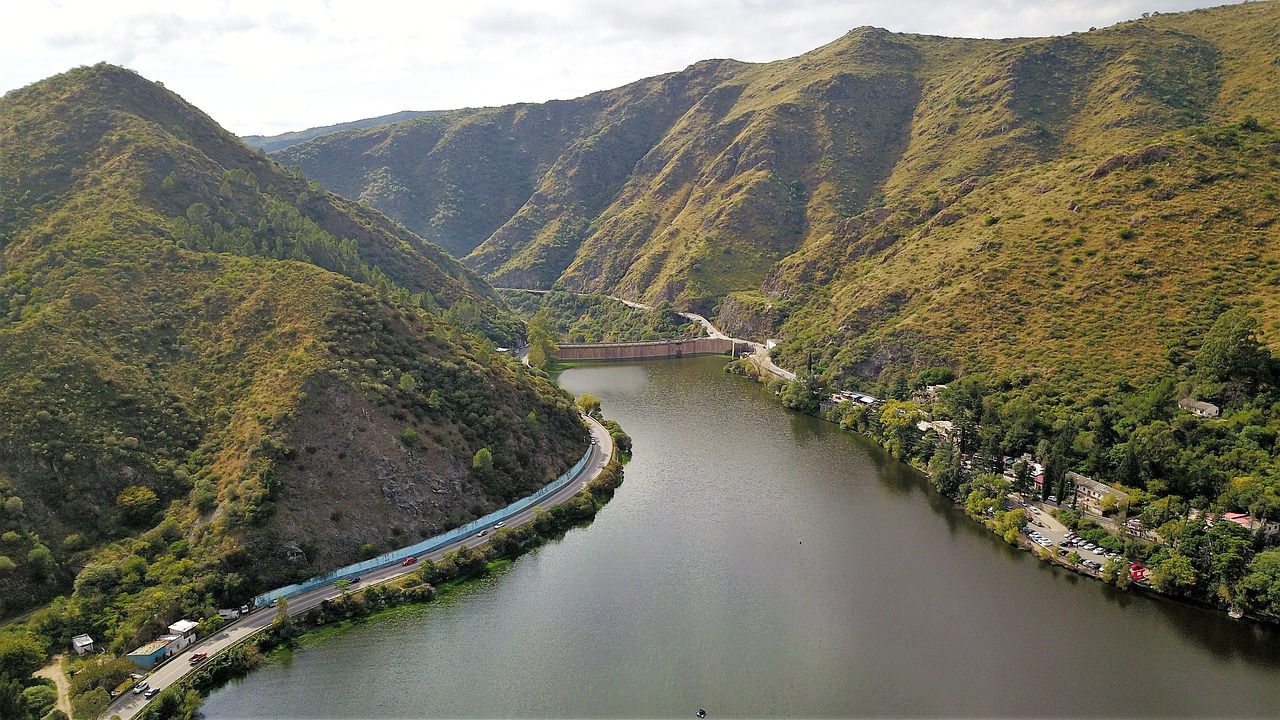Buenos Aires is the capital and largest city of Argentina, located on the eastern coast of South America. It is situated on the western shore of the Rio de la Plata, a large estuary that separates Argentina and Uruguay. Buenos Aires is known for its European-style architecture, tango music and dance, and rich cultural heritage. It is also an important center for business, finance, and tourism in South America.
Short History
Buenos Aires was founded as a Spanish colony in 1536, but it was abandoned just a few years later. It was refounded by the Spanish in 1580, and it grew into a major port city and cultural center over the next few centuries. In the 19th century, Buenos Aires became the capital of an independent Argentina, and it experienced a major wave of European immigration that helped to shape its culture and architecture. In the 20th century, Buenos Aires continued to grow and modernize, but it also faced political and economic turmoil, including a military dictatorship that lasted from 1976 to 1983. Today, Buenos Aires is a vibrant and cosmopolitan city that is known for its rich history, architecture, and cultural offerings.
Architecture
Buenos Aires is known for its diverse architecture that reflects the city’s cultural and historical heritage. The city boasts a mixture of styles that range from the colonial period to modern times.
Some of the most iconic architectural landmarks in Buenos Aires include:
- Casa Rosada: This iconic pink palace is the seat of the Argentine government and is located in the Plaza de Mayo. The building’s neoclassical façade and interior reflect the city’s history and politics.
- Teatro Colon: One of the world’s most famous opera houses, the Teatro Colon is renowned for its stunning acoustics and ornate décor. The theater is a masterpiece of French and Italian architecture.
- Obelisco: This 67-meter-high obelisk stands in the center of the city and is one of Buenos Aires’ most recognizable landmarks. Built to commemorate the city’s 400th anniversary, the obelisk is an impressive example of modernist architecture.
- Palacio Barolo: This striking building was inspired by Dante’s Divine Comedy and features intricate Gothic and Moorish details. The building’s observation deck provides stunning views of the city.
- Palermo Chico: This exclusive neighborhood is known for its elegant mansions, French-style palaces, and Art Deco buildings. Palermo Chico is one of the city’s most upscale and picturesque areas.
- El Ateneo Grand Splendid: This former theater has been converted into a beautiful bookstore that preserves the theater’s original décor, including frescoes, ornate balconies, and the stage.
- Casa de la Cultura: Originally a grand palace, this historic building is now a cultural center that hosts art exhibitions, concerts, and other events.
- Plaza de Mayo: One of the city’s most historic public squares, the Plaza de Mayo features a mix of architectural styles, including the neoclassical Cabildo and the colonial-era Metropolitan Cathedral.
Museums and Galleries
Here are some of the most interesting museums and galleries to visit in Buenos Aires:
- Museo Nacional de Bellas Artes: This museum has an impressive collection of Argentine art, as well as European works by artists such as Rembrandt, Van Gogh, and Goya.
- Museo de Arte Moderno de Buenos Aires: This museum features contemporary Argentine and Latin American art, including works by Diego Rivera and Frida Kahlo.
- Museo Evita: This museum is dedicated to the life and legacy of Eva Perón, the former First Lady of Argentina.
- MALBA: This museum of Latin American art has an extensive collection of works from the 20th and 21st centuries, including pieces by artists such as Diego Rivera, Tarsila do Amaral, and Frida Kahlo.
- Palacio Barolo: This historic building is an architectural masterpiece, inspired by Dante’s Divine Comedy, and includes a lighthouse at the top that offers panoramic views of the city.
- Fundación PROA: This contemporary art museum and cultural center showcases works by both Argentine and international artists.
- Museo de Arte Contemporáneo de Buenos Aires: This museum focuses on contemporary Argentine art, with a collection that includes works by emerging artists as well as established figures.
- Museo Casa Carlos Gardel: This museum is dedicated to the life and music of tango singer Carlos Gardel, and includes exhibits on the history of tango in Buenos Aires.
- Museo del Cabildo: This museum is housed in the former city council building and offers a glimpse into Buenos Aires’ colonial past.
- Museo de Arte Decorativo: This museum showcases decorative arts from around the world, including furniture, textiles, and ceramics.
These museums and galleries offer a wide range of artistic and cultural experiences, making Buenos Aires a must-visit destination for art lovers.
Landmarks and Monuments
Interesting landmarks and monuments worth visiting in Buenos Aires:
- Obelisco de Buenos Aires: This iconic monument located in the heart of the city was built in 1936 to commemorate the 400th anniversary of the city’s founding.
- Casa Rosada: This iconic pink palace is the official residence of the President of Argentina and is located in the Plaza de Mayo.
- Teatro Colón: One of the most famous opera houses in the world, Teatro Colón is a must-see for any visitor to Buenos Aires.
- Recoleta Cemetery: This historic cemetery is the final resting place of many of Argentina’s most famous figures, including Eva Perón.
- La Bombonera: The home stadium of the Boca Juniors soccer team, La Bombonera is an iconic landmark of Buenos Aires.
- Palacio Barolo: A historic office building that was inspired by Dante’s Divine Comedy, Palacio Barolo features a lighthouse at the top that offers stunning views of the city.
- Plaza de Mayo: The main square of Buenos Aires, Plaza de Mayo has been the site of many important political events throughout the city’s history.
- Floralis Genérica: This giant metal flower sculpture in the Recoleta neighborhood is an impressive sight to behold, especially when it opens and closes its petals.
- Caminito: This colorful street in the La Boca neighborhood is known for its tango music and dancing, as well as its vibrant buildings.
- Puerto Madero: This modern neighborhood is home to many high-end restaurants and bars, as well as the iconic Puente de la Mujer bridge.
These are just a few of the many landmarks and monuments that make Buenos Aires such a fascinating and historic city to explore.
Parks and Green Spaces
Some of the most beautiful parks and green spaces in Buenos Aires:
- Parque Tres de Febrero: Also known as Bosques de Palermo, this is the largest green space in Buenos Aires. It offers a variety of attractions, including lakes, gardens, and rose gardens.
- Jardín Botánico: This botanical garden contains over 5,000 plant species and features several greenhouses, sculptures, and fountains.
- Reserva Ecológica Costanera Sur: This ecological reserve is a protected area in the heart of the city. It features walking and biking trails, bird-watching opportunities, and beautiful views of the Rio de la Plata.
- Plaza de Mayo: This historic square in the center of the city is home to several important landmarks, including the Casa Rosada (presidential palace) and the Metropolitan Cathedral. It’s also a popular spot for protests and political demonstrations.
- Plaza San Martín: Located in the Retiro neighborhood, this plaza is named after the Argentine general and independence hero, José de San Martín. It features a monument to San Martín and several historic buildings, including the Palacio San Martín.
- Parque Centenario: This park is located in the Caballito neighborhood and features a lake, an amphitheater, a planetarium, and several museums.
- Parque de la Memoria: This park is located along the Rio de la Plata and is dedicated to the victims of state terrorism during the 1970s and 80s. It features several monuments and sculptures, as well as a reflecting pool and a walking trail.
- Rosedal de Palermo: This beautiful rose garden is located within Parque Tres de Febrero and features over 18,000 roses of different colors and varieties.
- Parque Chacabuco: This park is located in the Parque Chacabuco neighborhood and features several sports facilities, including a running track, a soccer field, and a basketball court.
- Parque Avellaneda: This park is located in the neighborhood of the same name and features several lakes, a golf course, and a cultural center.
These parks and green spaces offer visitors a chance to escape the hustle and bustle of the city and enjoy some fresh air and nature.
Shopping Districts
Worth to visit shopping districts in Buenos Aires:
- Recoleta: This is a high-end shopping district in Buenos Aires, known for its luxury boutiques, designer stores, and upscale shopping centers. Patio Bullrich is a popular shopping center in the area, featuring international luxury brands such as Chanel, Louis Vuitton, and Gucci.
- Palermo Soho: This trendy neighborhood in Buenos Aires is home to many independent designer shops, unique boutiques, and stylish cafes. The area is known for its bohemian vibe and eclectic mix of fashion, art, and design.
- San Telmo: This historic neighborhood is a popular destination for antique shopping, with many shops specializing in vintage clothing, furniture, and decor. The Sunday market in Plaza Dorrego is a great place to find unique souvenirs, handmade crafts, and one-of-a-kind treasures.
- Avenida Santa Fe: This is one of the main shopping streets in Buenos Aires, featuring a mix of high-end and mid-range stores. There are several shopping centers along the avenue, including Alto Palermo Shopping, which features over 200 stores and restaurants.
- Microcentro: This downtown area of Buenos Aires is home to many large department stores, including Galerias Pacifico, a shopping center housed in a beautiful 19th-century building. Florida Street, a pedestrian street lined with shops and cafes, is also located in the Microcentro.
- Avellaneda: This neighborhood in the southern part of Buenos Aires is known for its clothing stores and textile shops. The area is a popular destination for those looking for bargains on clothing and accessories, with many shops offering wholesale prices to the public. The Feria de Mataderos, a popular street market featuring traditional Argentine crafts and products, is also located in the area.
Food and Drink
Buenos Aires is known for its rich culinary culture, with a wide variety of delicious food and drinks to try. Here are some of the most popular dishes and beverages to taste when visiting Buenos Aires:
- Asado: Asado is a traditional Argentine barbecue, which usually includes beef, sausages, and other meats cooked over an open flame. It’s a social event and a must-try dish when in Buenos Aires.
- Empanadas: These are small, baked or fried turnovers filled with a variety of ingredients such as beef, chicken, cheese, and vegetables. They’re a popular snack and are available at many cafes and restaurants throughout Buenos Aires.
- Dulce de Leche: This is a sweet, caramel-like spread made from milk and sugar, and is used in many desserts and pastries in Buenos Aires. It’s delicious on its own or as a topping for ice cream, pancakes, and other sweets.
- Mate: This is a traditional South American beverage made by steeping dried leaves from the yerba mate plant in hot water. It’s often shared among friends and is a social and cultural experience in Argentina.
- Malbec wine: Argentina is known for its delicious wines, particularly the Malbec variety, which is a red wine with a fruity, full-bodied flavor. It’s a great accompaniment to many Argentine dishes, especially steak.
- Milanesa: This is a thin, breaded cutlet of meat (usually beef or chicken) that’s fried and served with a variety of toppings, such as ham, cheese, and tomato sauce. It’s a popular dish in Buenos Aires and is often served with fries or salad.
- Alfajores: These are sweet, sandwich-like cookies filled with dulce de leche or other sweet fillings. They’re a popular treat in Buenos Aires and are often found in cafes and bakeries.
- Fernet con Coca: This is a popular Argentine drink made by mixing Fernet, a bitter, aromatic spirit, with Coca-Cola. It’s an acquired taste, but many locals enjoy it as a digestif after a meal.
Transportation
Buenos Aires is a large city, but it has a well-developed public transportation system that makes it easy to get around. Here are some of the best ways to move around Buenos Aires:
- Subte (subway): The subway is one of the fastest and most efficient ways to travel around Buenos Aires. There are six subway lines that cover much of the city, and the fares are inexpensive.
- Colectivo (bus): Buses are a popular mode of transportation in Buenos Aires and cover almost every corner of the city. They can be crowded during rush hour, but they’re a good way to get a sense of the city and its neighborhoods.
- Taxi: Taxis are widely available in Buenos Aires and are a convenient way to get around if you’re short on time or don’t want to use public transportation. They’re relatively inexpensive compared to many other major cities.
- Bike: Buenos Aires has a public bike-sharing system called Ecobici, which is a great way to explore the city while getting some exercise. There are also several bike rental shops throughout the city.
- Walking: Buenos Aires is a pedestrian-friendly city, and walking is a great way to explore many of its neighborhoods. Many of the city’s main attractions are within walking distance of each other, and you can get a good sense of the city’s culture and history by strolling its streets.
It’s also important to note that while driving a car in Buenos Aires is possible, it can be difficult due to traffic congestion and limited parking. Using public transportation or other modes of transportation is often more efficient and practical.
City Safety
Buenos Aires is generally a safe city, but like any other large city, there are some safety concerns that travelers should be aware of. Petty theft, such as pickpocketing and bag snatching, can be a problem in tourist areas and on public transportation. It’s important to take basic precautions, such as keeping your valuables close, avoiding carrying large amounts of cash, and being aware of your surroundings.
There are also some areas of Buenos Aires that are known to be less safe, particularly at night. It’s recommended to avoid certain neighborhoods, such as La Boca and parts of the Villa 31 slum, after dark.
It’s important to note that Buenos Aires has a visible police presence in many parts of the city, and there are also private security guards at many hotels, shopping centers, and other public places. This can help to deter crime and provide a sense of security.
Overall, Buenos Aires can be a safe city to visit, especially if travelers take basic safety precautions and stay aware of their surroundings.
Expensive or Cheap
Buenos Aires can be a relatively affordable city to visit, depending on your budget and travel style. In general, prices in Buenos Aires are lower than in many other major cities, especially in Europe and North America.
Accommodation prices in Buenos Aires can vary widely, depending on the neighborhood and the type of accommodation you choose. Budget-friendly options include hostels and guesthouses, while luxury hotels and serviced apartments can be more expensive.
Food and drink prices in Buenos Aires are generally reasonable, especially if you eat like a local. There are many cafes and restaurants throughout the city offering affordable meals, and street food is also a great option for budget-conscious travelers. However, dining at high-end restaurants and bars can be quite expensive.
Transportation costs in Buenos Aires are also relatively low, with a single subway fare costing around USD $0.60. Taxis and rideshare services such as Uber and Cabify are also available and are generally affordable.
Overall, Buenos Aires can be a great destination for travelers on a budget, as long as you plan accordingly and are mindful of your spending.
Best Time to Travel
The best time to travel to Buenos Aires is during the fall (March to May) or the spring (September to November) when the weather is mild and there are fewer crowds. The summer months (December to February) can be very hot and humid, while the winter months (June to August) can be cool and rainy. However, keep in mind that Buenos Aires is a popular tourist destination year-round, so it’s important to book accommodation and activities well in advance.
Date Ideas
Buenos Aires is a romantic city with many date ideas for couples to enjoy. Here are some suggestions:
- Tango Show: Buenos Aires is the birthplace of the Tango, and there are many tango shows and dance performances throughout the city. Sharing a romantic night out at a tango show can be a great way to experience the city’s culture and enjoy an evening together.
- Palermo Parks: The parks in the Palermo neighborhood are a great place to take a leisurely stroll or have a picnic. The Rose Garden and Japanese Garden are particularly beautiful and offer a serene escape from the hustle and bustle of the city.
- La Boca: The colorful neighborhood of La Boca is a great place to wander hand-in-hand and take in the colorful buildings, street art, and vibrant atmosphere. There are also many cafes and restaurants in the area where you can enjoy a meal or a drink together.
- Boat Ride: Taking a boat ride on the Rio de la Plata can be a romantic way to see the city from a different perspective. There are many boat tours and dinner cruises available, offering a unique and memorable experience for couples.
- San Telmo Market: The Sunday market in San Telmo is a lively and bustling affair, offering a variety of artisanal crafts, antiques, and souvenirs. Browsing the stalls and people-watching together can be a fun and romantic way to spend a lazy Sunday morning.
- Wine Tasting: Argentina is known for its delicious wines, and there are many wine bars and tasting rooms throughout Buenos Aires where you can sample some of the country’s best wines together
Fun and Interesting Facts
Here are some fun and interesting facts about Buenos Aires:
- Buenos Aires is often referred to as the “Paris of South America” due to its European-inspired architecture, wide boulevards, and lively cultural scene.
- The city is home to the world’s widest avenue, Avenida 9 de Julio, which features the iconic Obelisk monument in the center.
- Buenos Aires is known for its vibrant street art scene, with many buildings and public spaces covered in colorful murals and graffiti.
- Tango, one of Argentina’s most famous cultural exports, originated in the working-class neighborhoods of Buenos Aires in the late 19th century.
- The city is home to the world’s first “eco-park,” a 865-acre nature reserve located within the city limits.
- Buenos Aires has the highest concentration of bookstores per capita in the world, with over 700 bookstores throughout the city.
- The Recoleta Cemetery, located in the Recoleta neighborhood, is the final resting place of many notable Argentines, including Eva Perón and other political and cultural figures.
Overall, Buenos Aires is a dynamic and culturally rich city, known for its passionate people, delicious food, and lively nightlife. From its European-inspired architecture and wide boulevards to its vibrant street art and tango culture, Buenos Aires is a fascinating and unique destination that offers something for everyone.



